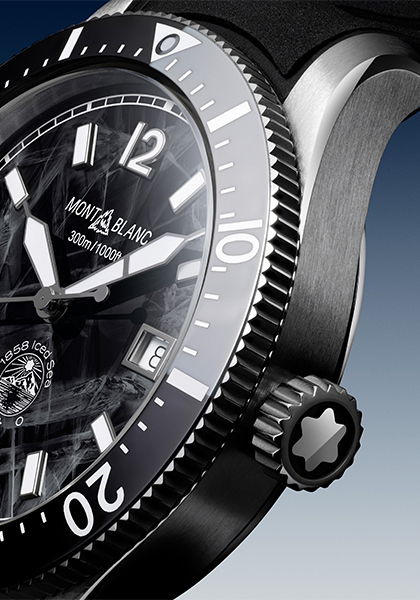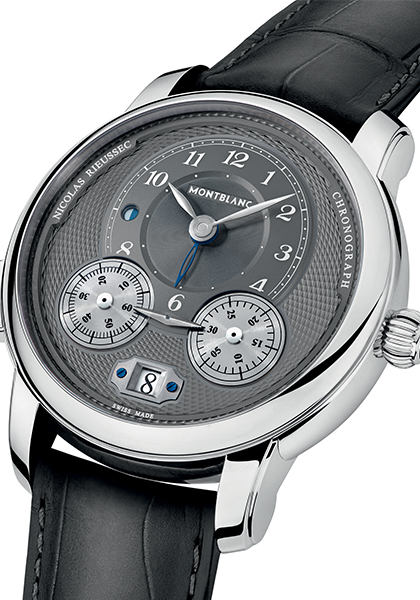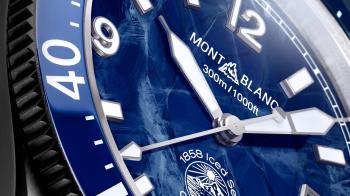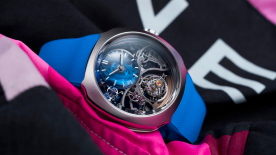To reach the summit of Mont Blanc you can set off from Chamonix or Courmayeur on one of several possible routes. The most spectacular takes in the Aiguille du Midi; the most traditional goes via the Nid d’Aigle, and the longest and least popular passes by Les Grands Mulets. And then there’s the most dangerous route of all: the Walter Bonatti. But all of them are demanding. Mont Blanc is not so easily conquered.
Is that what led the venerable watchmaker that bears its name to focus on sport watches? Perhaps. Like those four routes to the summit, Montblanc has been through four different stages in its journey to the pinnacle of sport watch design: two historical periods (Rieussec and Minerva) and two contemporary periods.

The Rieussec breakthrough
Nicolas Rieussec’s invention is without a doubt one of the most important in all of watchmaking history. At one time he was considered the inventor of the chronograph. Officially, according to the modern understanding of the term “chronograph”, that title now belongs to Louis Moinet. But, etymologically speaking, Rieussec’s ingenious invention was indeed a “chrono graph” – a machine that literally wrote down the time. And that’s particularly fitting for a company whose primary business is writing instruments. Let’s not quibble over the few short years between Rieussec’s invention (1822) and that of Moinet (1816). Today, Rieussec’s invention inspires the Montblanc style. It unifies time measurement and writing, the spirit of precision and innovation, centuries-old heritage and evergreen style.

The foundational step: Minerva
Barely a generation later, in 1847, Charles Auguste Robert set up shop in Villeret where his son, Charles Ivan, later established his own watchmaking workshop. The foundations of the future Minerva were laid in 1858, a key date in Montblanc’s history. Starting off as a simple watchmaker, Robert grew his business into a factory that produced escapements, assortments and balance springs. He was close to the Blancpain and Audemars families, and developed a winding system that brought him widespread recognition. As his business grew, Charles Ivan Robert founded several brands – “Ch. Robert”, “Mercur” and lastly, “Minerva”, which specialised in movements, cases and dials. The family factory created its first in-house movement in 1902. By 1918, Minerva had launched its own sports timers and chronographs. The story of the family firm lasted nearly a century, until in 2007 it was taken over by Montblanc, ensuring the company’s survival in a much more competitive environment. But the takeover had one important feature: Montblanc didn’t absorb Minerva, as is so often the case. Conscious of its incredible heritage value for Swiss watchmaking, Montblanc carefully preserved the Minerva brand along with its name, its archives, its staff and its historic premises. Even today, Minerva movements developed under Montblanc’s umbrella remain highly sought-after for their distinctive aesthetic.

Acceleration
2007 marked another turning point for Montblanc. The prestigious company publicised its ambition to preserve watchmaking heritage through the Minerva Institute and the TimeWriter programme, developed the internal capacity to manufacture its own balance springs, and launched a policy of reviving Minerva’s heritage, thus placing Montblanc among the most prominent manufacturers of very high-end chronographs. At the same time, Montblanc introduced more contemporary and accessible ranges, such as the TimeWalker, whose case profile with its openworked lugs was a striking innovation. Montblanc reached the pinnacle of the chronograph market with the introduction of such groundbreaking concepts as the Metamorphosis, unveiled at the SIHH in 2010.
The modern era
Today, Montblanc’s legitimacy in the field of chronographs, and of sports watches in general, is beyond question. The 2020s have solidified its historical trajectory through collections that reflect its rich heritage, as seen in the names of collections such as “1858” and “Heritage”. The Rieussec, which is still in production, attests to the enduring appeal of the collections and provides reassurance to investors. The 1858 collection, particularly the Geosphere version, has been a resounding success – exclusive online sales have been quickly oversubscribed. The latest offering, Iced Sea, is not yet available in a chronograph version, but for a select group of discerning collectors a limited series of 23 pieces, produced in partnership with The Fine Watch Club, will be presented at Watches & Wonders Geneva 2023. It’s an opportunity not to be missed, and we will be bringing you further coverage very soon. For a select group of collectors, a 23-piece limited edition will be unveiled at Watches and Wonders Geneva 2023, created in collaboration with the Fine Watch Club. More to come on this unique opportunity shortly.






